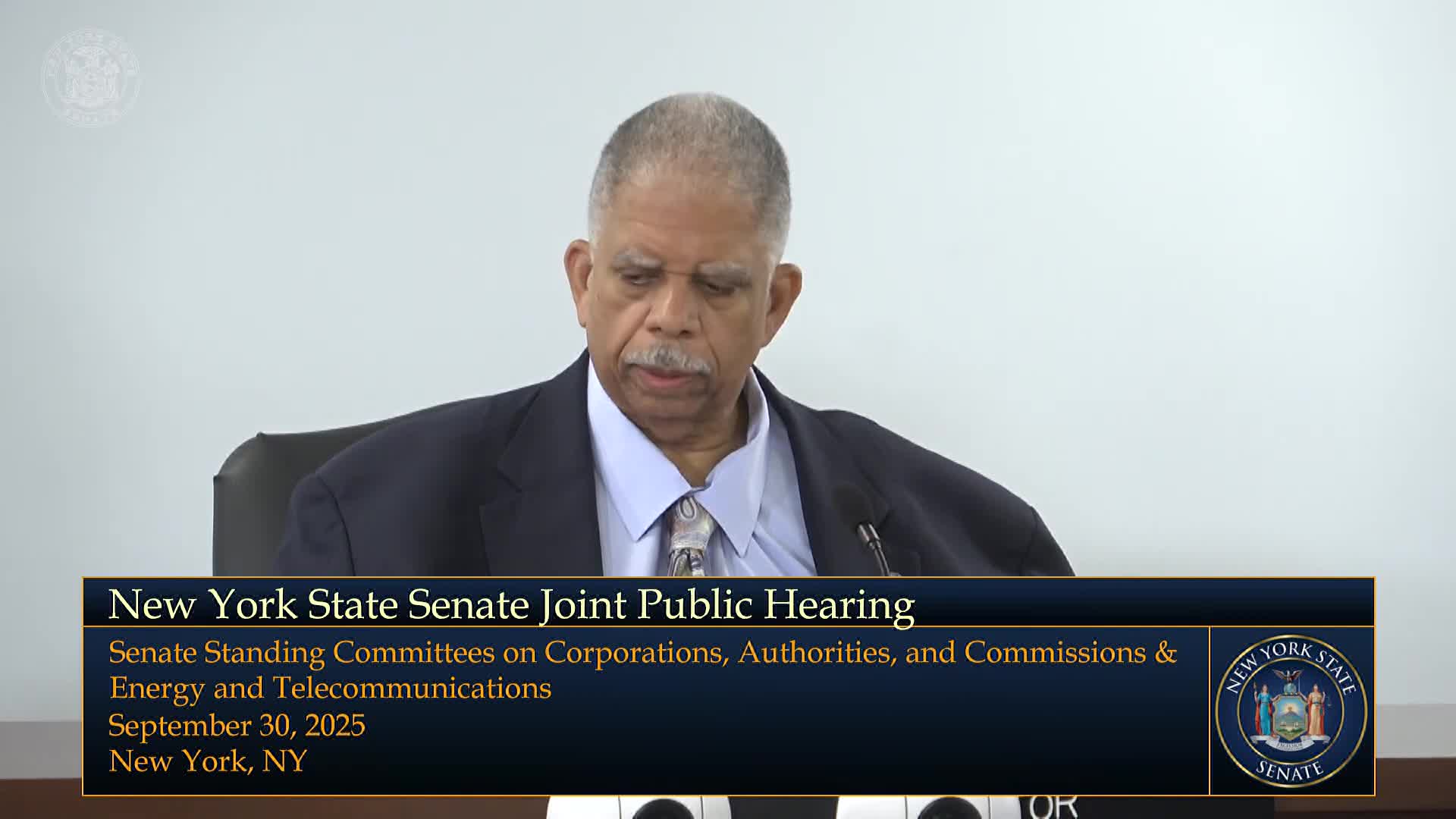Senator Grama questions DPS on climate goals and utility rate impacts
October 01, 2025 | 2025 Legislature NY, New York
This article was created by AI summarizing key points discussed. AI makes mistakes, so for full details and context, please refer to the video of the full meeting. Please report any errors so we can fix them. Report an error »

In a recent New York State Senate Joint Public Hearing, discussions centered on the critical role of the Department of Public Service (DPS) in guiding the state towards its climate goals. Senator Grama emphasized the need for a cohesive approach among public and private sectors to avoid working in silos, which can hinder progress in achieving these objectives.
A significant concern raised during the hearing was the balance between necessary clean energy investments and the potential for excessive utility spending that could lead to higher rates for consumers. The DPS addressed this by explaining its rigorous rate case process, which involves a thorough review of utility proposals to ensure that only legitimate costs are passed on to ratepayers. The DPS highlighted its commitment to scrutinizing utility spending, using the metaphor of "gold screws" to illustrate the importance of identifying unnecessary expenses.
Two notable examples were shared, including the Clean Path New York project, which was initially proposed as a generation and transmission project but was ultimately rejected by the DPS for not aligning with the state's needs. This decision was framed as a victory for ratepayers, saving them significant costs.
The hearing also touched on the equitable distribution of costs associated with the state's climate transition. The DPS has conducted reports analyzing the costs related to the Climate Leadership and Community Protection Act (CLCPA) and is prepared to share findings with the committee. Additionally, the DPS committed to providing a timeline for utilities to meet the state's ambitious renewable electricity goals, aiming for 70% by 2030.
As New York continues to navigate its energy future, the discussions from this hearing underscore the importance of transparency and accountability in utility spending, ensuring that the transition to clean energy is both effective and fair for all residents. The outcomes of these discussions will play a crucial role in shaping the state's approach to climate action and energy policy in the coming years.
A significant concern raised during the hearing was the balance between necessary clean energy investments and the potential for excessive utility spending that could lead to higher rates for consumers. The DPS addressed this by explaining its rigorous rate case process, which involves a thorough review of utility proposals to ensure that only legitimate costs are passed on to ratepayers. The DPS highlighted its commitment to scrutinizing utility spending, using the metaphor of "gold screws" to illustrate the importance of identifying unnecessary expenses.
Two notable examples were shared, including the Clean Path New York project, which was initially proposed as a generation and transmission project but was ultimately rejected by the DPS for not aligning with the state's needs. This decision was framed as a victory for ratepayers, saving them significant costs.
The hearing also touched on the equitable distribution of costs associated with the state's climate transition. The DPS has conducted reports analyzing the costs related to the Climate Leadership and Community Protection Act (CLCPA) and is prepared to share findings with the committee. Additionally, the DPS committed to providing a timeline for utilities to meet the state's ambitious renewable electricity goals, aiming for 70% by 2030.
As New York continues to navigate its energy future, the discussions from this hearing underscore the importance of transparency and accountability in utility spending, ensuring that the transition to clean energy is both effective and fair for all residents. The outcomes of these discussions will play a crucial role in shaping the state's approach to climate action and energy policy in the coming years.
View full meeting
This article is based on a recent meeting—watch the full video and explore the complete transcript for deeper insights into the discussion.
View full meeting
